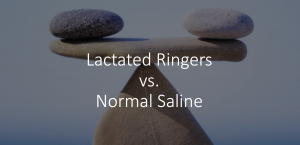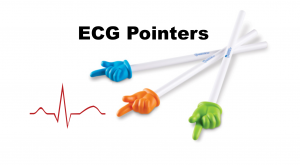
Author: Christiaan van Nispen, MD (Resident, Emergency Medicine Physician, San Antonio, TX); Brannon Inman, MD (Chief Resident, Emergency Medicine Physician, San Antonio, TX) // Reviewed by: Alex Koyfman, MD (@EMHighAK); Brit Long, MD (@long_brit)
Effect of Early Sustained Prophylactic Hypothermia on Neurologic Outcomes Among Patients with Severe Traumatic Brain Injury
AKA: The “POLAR” Trial
Clinical question:
In patients with severe traumatic brain injury, does early prophylactic hypothermia improve long-term neurologic outcomes?
Design: Multi-centered, single-blinded, randomized controlled trial
PICO:
Population:
- Inclusion Criteria:
- Patients aged 18-60 years
- GCS < 9
- Actual or imminent endotracheal intubation
- Out of Hospital Exclusion Criteria:
- SBP < 90 mm Hg
- Heart rate > 120 per minute
- Pregnancy
- Possible or suspected uncontrolled bleeding
- GCS = 3 with unreactive pupils
- Ability to intubate the patient without the use of medications
- Cardiac arrest
- Illicit drugs or alcohol ingestion suspected
- Known use of anticoagulation
- Penetrating injuries to the neck or torso
- In Hospital Exclusion Criteria:
- All above out of hospital criteria, if not already identified by emergency medical services
- Failure by EMS to transport the patient to a participating hospital
- Patient was determined to likely need a surgery or embolization procedure for hemostasis
- Cooling deemed to be not in patient’s best medical interest, according to the judgement of the attending physician
- Enrollment/Randomization:
- Randomization was performed in the field by 5 emergency medical services units
- Randomization was performed in hospital at 14 emergency departments
- Randomization sites were spread across 6 countries
- Total of 511 patients recruited with 466 completing primary outcome evaluation
- Of these, 231 were enrolled out of hospital
- Enrollment was conducted from 2010-2017, with final follow-up completed in 2018
- There was a similarity in characteristics between the two groups


Intervention:
- Prophylactic cooling to between 33⁰C and 35⁰C was performed through patient exposure, up to 2000 mL intravenous normal saline at 4⁰C, and surface cooling wraps
- Hypothermia was maintained for at least 72 hours
- Rewarming at 72 hours if intracranial pressures (ICPs) were less than 20 mm Hg; patients remained cooled for up to 7 days if intracranial pressure was elevated
Comparator:
- Enforced normothermia, with target temperature of 37⁰C ±5⁰C
- Use of surface cooling wraps for pyrexia and/or refractory intracranial hypertension
Outcome:
- Primary outcome: favorable neurological outcomes defined by Glasgow Outcome Scale-Extended (GOS-E) Score, 5-8 at 6 months
- Occurred in 117 patients (48.8%) in the hypothermia group
- Occurred in 111 patients (49.1%) in the normothermia group
- No significant differences in most secondary outcomes, including:
- Mortality at 6 months after injury
- Time to death
- Time to reach target temperature
- Days of mechanical ventilation
- Intensive care unit length of stay
- Hospital length of stay
- Mean GOS-E score at 6 months
- Unfavorable GOS-E score for survivors
- Some secondary outcomes with significant, worse outcomes in hypothermia group:
- Pneumonia (as measured in per protocol analysis): 70.5% vs. 57.1%
- Bradycardia: 18.8% vs. 4.2%
- Average ventilator days (8.3 vs. 6.9)


Take Aways:
- The data do not suggest that targeted hypothermia improves neurological function, reduces death, or reduces hospital length of stay as compared to normothermia.
- Several secondary outcomes suggest a signal toward harm with hypothermia, including incidence of pneumonia, bradycardia, and more days ventilated.
- Multiple centers, strong follow-up, and rapid induction of hypothermia are strengths of the trial.
- That 19% of patients were withdrawn from the study decreases generalizability.
My take:
- This trial is consistent with other recent data which demonstrate lack of support for prophylactic hypothermia as a standard of care in traumatic brain injury.
Source Article:
Cooper DJ, Nichol AD, Bailey M, et al. Effect of Early Sustained Prophylactic Hypothermia on Neurologic Outcomes Among Patients with Severe Traumatic Brain Injury: The POLAR Randomized Clinical Trial. JAMA. 2018; 320(21):2211-2220. DOI: 10.1001/jama.2018.17075
Appendix:
Glasgow Outcome Scale – Extended
- 1: Dead
- 2: Vegetative state (only reflex responses and periods of eye opening)
- 3: Low severe disability (requires full assistance with acts of daily living)
- 4: Upper severe disability (requires partial assistance with acts of daily living)
- 5: Low moderate disability (Some disability which presents resumption of work or school, but independent)
- 6: Upper moderate disability (Some disability, but can at least partly resume work or other activities)
- 7: Low good recovery (Minor deficits that affect daily life)
- 8: Upper good recovery (Any deficits still present are not disabling)








